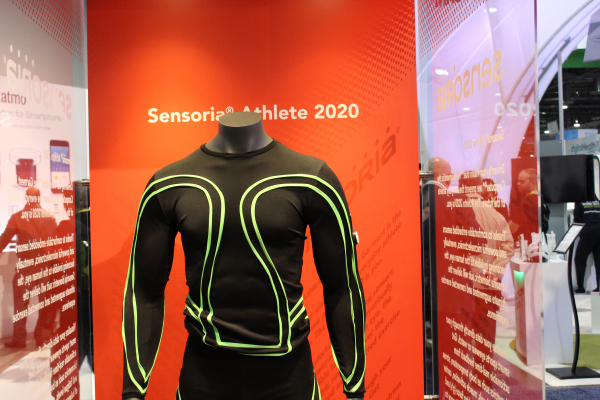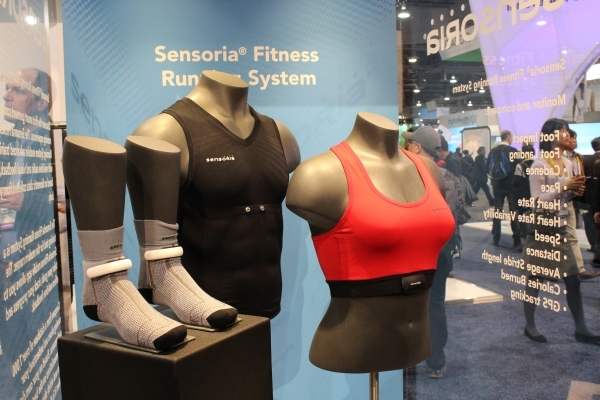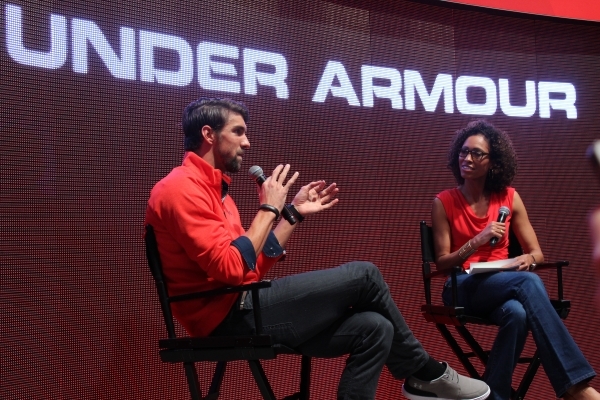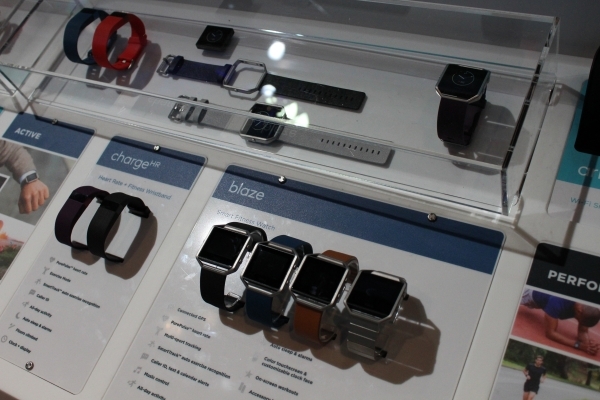CES shows how tech is at work to improve your health
Technology is changing the way people think about health and fitness.
While people can still wear trackers to observe the type of activity they plan to do or what goals they want to set, the future of the industry is directed toward increasing the type of health factors monitored as well as integrating it into other devices.
CES kicked off Wednesday offering people a glimpse of this expanding technology with numerous exhibits focused on how to make fitness more accessible through cellphones, wristbands and many other devices.
Liz Josefsberg, a fitness expert with LevL, says things are getting easier to track.
"They are going from wearable to forgettables," she says.
Though we aren't there yet, she says imagine a sleep sensor that's just in people's sheets or devices that analyze the breaths you take.
"There is a movement toward making this stuff become more a part of you so you're not thinking about it as much," she says.
The market is saturated with fitness trackers that people wear on their wrists — in some cases ankles.
For the most part, these devices track things such as heart rate, speed, distance ran, steps walked or even hours slept.
But experts at CES see new trends.
Take, for example, Sensoria, which makes wearable trackers in clothing — socks that can track running or a shirt with a monitor to track heart rate.
The sensors in the device give real-time feedback to the users' phone through a free mobile app, making it easier for runners to adjust things such as speed.
The devices are supposed to give more specific data to help athletes.
Sensoria is developing a biometric suit that could be out before 2020. The prototype — a black suit with traces of lime green throughout — has sensors inside the fabric to monitor body temperature, stress and fatigue, center of balance and muscle activation.
While some device designers focus on the way they are worn, others look at the type of data offered.
Under Armour once was just defining what athletes wear, but now it is in the business of helping athletes — from the most amateur to pros such as Michael Phelps — become more efficient.
The company is introducing the HealthBox to monitor activity, nutrition, fitness and sleep, all of which are integral to becoming a better athlete. With a wristband and a scale, which measures weight and body fat, people can track all four health factors through a mobile app (as of right now, people log calories through the app). People can set goals and see progress.
There are also products on the market or in development looking to target specific workout goals.
Skulpt, a device no bigger than a cellphone, is designed to measure body fat percentage specifically in muscle areas in the tricep or abdominal region. The device sends electrical current to specific muscles to get a more accurate read.
With all these new devices being developed, it brings up the question of whether they work to improve health habits.
During a seminar on health technology, Stacey Burr, vice president and general manager of digital sports at Adidas, says the data show the devices are effective.
"The data shows (trackers are) making a difference for both professional and amateur athletes alike," she says. "Through them, people are starting to realize their potential."
Josefsberg adds despite some people's best efforts, in the past they have been unable to figure out why they weren't getting healthier or weren't even sure how to start.
"We can finally turn the tables," Josefsberg says. "We can tell people it's because you're not moving at work or sitting too much. We can illuminate why they are the way they are. With this kind of data, we can change the world."
But data collected isn't just for users.
Davide Vigano, CEO of Sensoria, says people can decide to share the information with a trusted adviser, whether it's a coach or a friend.
"One day, it could go to a physical therapist," he says.
Though the technology has come a long way, people in the industry see even more to come.
Josefsberg says LevL is developing a breath analysis that can track a chemical in people's saliva informing them the moment they start burning fat.
"So we know if our food choices or exercise is working," she says.
But that's not to say there isn't room for the wearable trackers on the market.
Tuesday, Fitbit announced its new product Fitbit Blaze, which is a rival to the Apple Watch. The device comes with all the other fitness-tracking Fitbit is known for, but it also includes the ability to receive calendar alerts and text notifications, though no Facebook or Twitter updates.
Within Blaze, and being updated in other Fitbit products such as Charge HR and Surge, is the smart track, which automatically knows what sport or activity a person is doing — running, soccer or even hopping on the elliptical — without entering the information.
Though the options to track health and fitness are growing, it all comes down to personal preference.
How do you want to wear it?
Contact reporter Michael Lyle at mlyle@reviewjournal.com or 702-387-5201. Follow @mjlyle on Twitter.































